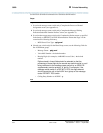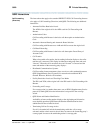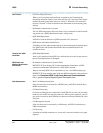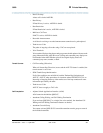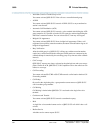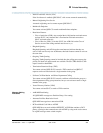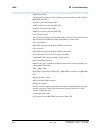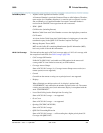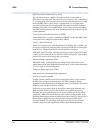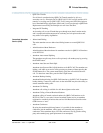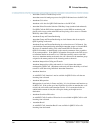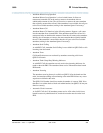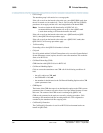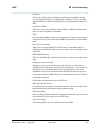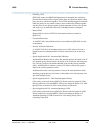
QSIG B Private Networking
Administration for Network Connectivity
CID: 77730 555-233-504 — Issue 1 — April 2000
386
• QSIG Centralized Attendant Service (CAS)
The calls that cover from a QSIG CAS branch to main are not treated as
QSIG-VALU Coverage calls. This is because calls covered to “attd” (administered
as a coverage point on a Coverage Path form) do not utilize Remote Call Coverage
table and QSIG-VALU Call Coverage is supported only for coverage points
associated with Remote Call Coverage table. The implication of this is that the
attendant on the main will lose QSIG-VALU Call Coverage display information
and QSIG Path Replacement will not be invoked after the call is answered by the
covering attendant.
• Coverage of Calls Redirected Off-Net (CCRON)
If both QSIG-VALU coverage is enabled and CCRON is enable, the QSIG-VALU
coverage will have a higher precedence then CCRON.
• Privacy - Manual Exclusion
With Call Coverage feature, when the principal user bridges onto a call that went
to coverage and has been answered at the coverage point, the user is not dropped
when Privacy - Manual Exclusion is activated by the Covering user.
With QSIG-VALU Coverage, if the Principal bridges on the call after the remote
covering user has answered the call. then the remote coverage user stays bridged
until the call clears or the covering user goes on-hook.
• Simulated Bridge Appearance (SBA)
With QSIG-VALU, maintaining SBA for Principal user will be based on the
administration of the field “Maintain SBA at Principal” on the System Parameters
- Call Coverage / Call Forwarding form.
• Temporary Bridge Appearance (TBA)
Same interaction as Simulated Bridge Appearance.
• AUDIX / Centralized AUDIX
AUDIX is usually specified as the last coverage point. When a call is routed to
AUDIX (local or remote centralized place), the TBA (Temporary Bridge
Appearance) is not maintained for the Principal user (i.e. the Principal user can not
bridge on to the call after it routes to AUDIX).
For the last coverage point, which do not require control at the Principal user’s
PBX, the QSIG-VALU Coverage shall route the call as QSIG Diversion by
Rerouting instead of QSIG Diversion by forward-switching and let the remote
calling user’s PBX route the call directly to the remote covering number. If the
Rerouting PBX indicates failure, then the Principal user’s PBX (i.e. Served User’s
PBX in terms of QSIG Diversion) shall revert to the normal QSIG-VALU
Coverage handling. The advantage of this approach is that it saves the trunk
resources and provide path optimization without QSIG Path Replacement.



